Nature’s Handiwork – Introduction to Gongshi
PRIMITIVE - Friday, July 28, 2017By Glen Joffe
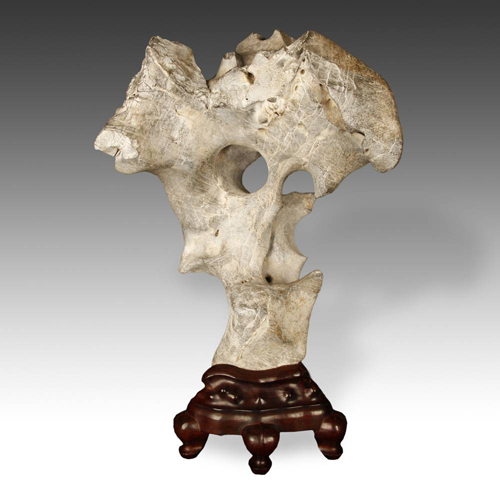 |
|
In China, the pure beauty of nature has been treasured for centuries, and this is most evident in a collecting category called Gongshi. The art of Gongshi is typically regarded as the appreciation and collecting of highly unusual rocks, although today the category itself has been expanded to encompass highly unusual wood forms as well. Long ago, the Chinese began decorating gardens and courtyards with large stones, and around 1,000 years ago smaller, more refined stones began to be brought inside by scholars, officials and connoisseurs so they could be appreciated in their studios. These objects were then secured in fitted, custom made bases, which further enhanced their value and appreciation. Ultimately, the Imperial court began presenting Gongshi as tribute objects to powerful people in China and the rest of Asia and their appreciation expanded to a larger, yet still refined audience.
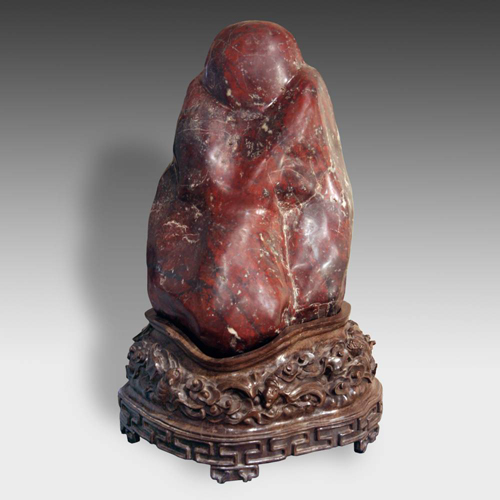 |
|
Gongshi can be loosely divided into two general categories: abstract and representational. Abstract Gongshi are commonly called “scholar’s rocks.” They may be reminiscent of coral or cloud like shapes and often have swirls, holes, perforations, and myriad caverns on their surface. They sometimes resemble famous or imaginary mountains and natural wonders, and typically appear naturally eroded. Scholar’s rocks are considered the embodiment of the transformative powers of nature.
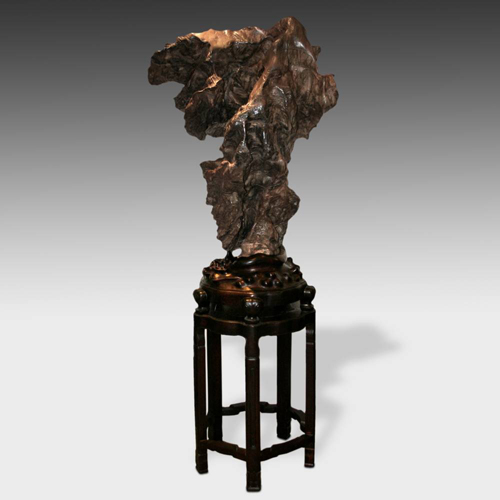 |
|
Gongshi which fall into the second category, representational, can also be called “Spirit Stones.” In fact, the word gong means "spirit" and shi "stone." In this category, individual pieces transcend the abstract and begin to reference the known world. For example, Gongshi with inclusions looking like people, mythological creatures, and other imagery fall into this category. So do Gongshi shaped in representational ways. Spirit stones condense the known world in an abstract fashion, or conversely, expand the abstract world in a representational way.
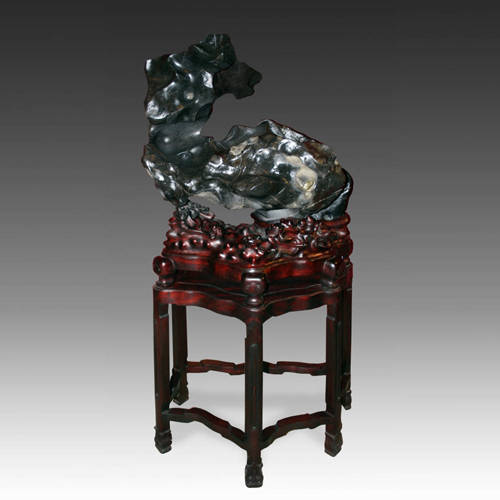 |
|
Ironically, some of the most valuable Gongshi are not composed of stone at all; but wood. Wood Gongshi is known as Mu Gongshi, mu being the Chinese word for wood. They are evaluated like stone, but generally speaking, are rarer. You could define Mu Gongshi as naturally occurring wood forms corresponding to the same characteristics as scholar’s rocks or spirit stones. They may be purely abstract or figurative, or some combination of the two.
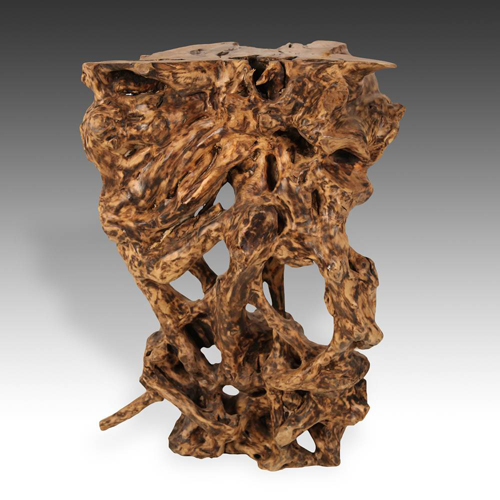 |
|
Gongshi are judged by evaluating four basic characteristics: shape, material, color and spirit. First, Gongshi should be naturally shaped; however, the myth about Gongshi is that they are never touched. In reality, it is okay to ever so slightly modify a Gongshi, but never to the point where any individual piece enters the realm of man made sculpture. Second, Gongshi should be hard in material and rich in texture. They should be composed of material which intimates they will endure. Third, they should have a hue and lustre which is natural, simple and pure, oftentimes giving them a feeling of natural antiquity. And fourth, regardless of the category in which they fall, Gongshi should be evocative, not benign. Although they may affect each person differently, they should have a “persona” evident to a focused observer. This is true for stone and wood.
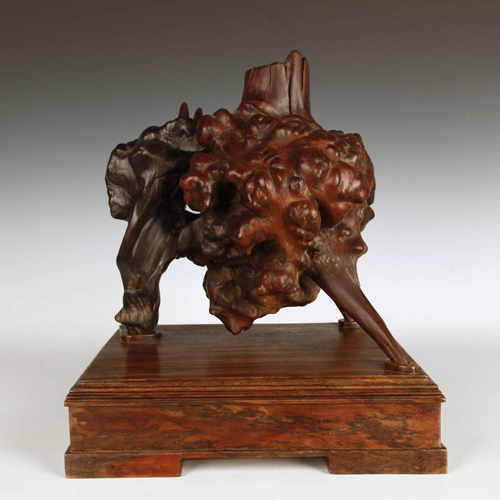 |
|
Gongshi may also be categorized according to composition. Historically, four types of stone have been revered: Lingbi (found in Lingbi County of Anhui Province), Ying rocks (from Yingde in Guangdong Province), Taihu rocks (from Tai Lake on the border of Jiangsu and Zhejiang provinces), and Kun rocks (from Kunshan in Jiangsu Province). However, other types of stone may also be considered Gongshi, including Yellow Wax Rocks, Petrified Wood, Zibowen Rocks, Black Ying Rock, Fengli Stone, Red River Stone and Laoshan Green Stone. Taken together, these comprise more than ten basic types of Gongshi, although today even more types of stone can be classified as Gongshi. When it comes to wood, the wood species is considered less important than the form it takes. Nonetheless, generally speaking, hard woods such as Rose, Huali, Zitan, Jichi, and many forms of Burl woods are considered more valuable than their softer counterparts.
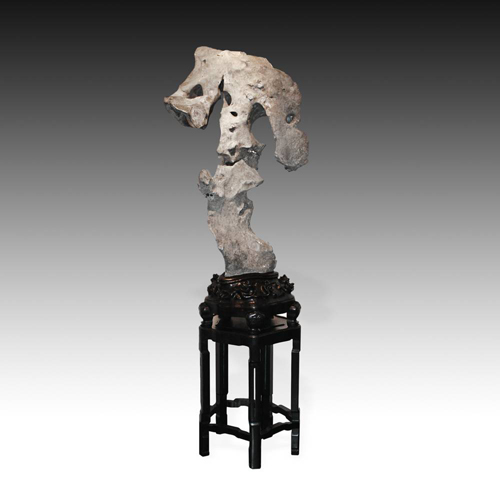 |
|
To Chinese scholars of the past, Gongshi represented a focus for meditation. Used as objects for contemplation prior to creating poems or paintings, they could also be functional, serving as brush rests, ink stones, incense holders, seals, and functional furnishings, usually in the form of tables. However they were used, all were embraced and appreciated for their aesthetic merits. The abstract, yet formal qualities of Gongshi that appealed to scholars of the past are the exact same qualities that appeal to collectors of today – and these are the same qualities informing both Chinese calligraphy and painting as well as modern, western art.
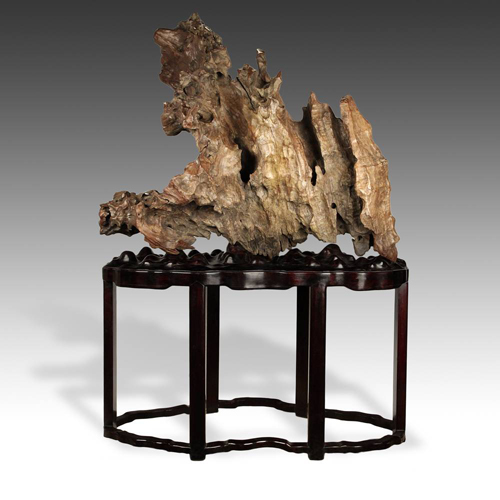 |
|
Throughout history, Gongshi have been the subject of countless poems, stories and paintings. Some have even become venerated as deities and credited with their own consciousness and powers. Ancient Chinese believed Gongshi contained the basic life force – known as qi (chee) – and like people, underwent profound changes in the course of their development. Modern aficionados see earth as the ultimate artist. Yet, past or present, the appreciation of Gongshi has always been rooted in the aesthetics of form tempered by imagination.